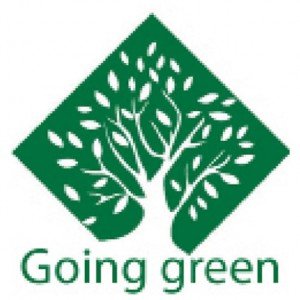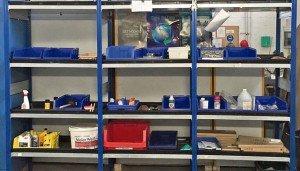
Public Affairs
USAG Stuttgart
In each of the three major counties in the Stuttgart area, there are differences in how trash and recyclables are handled.
For on post residents, things are relatively simple. Clearly labeled containers are available in all housing areas, and the online guide details what items can and cannot go into each container.
Although specific procedures vary, most programs divide trash and recyclables into six categories: trash/rubbish, recyclables, paper, organic waste, glass and hazardous waste.
Here are some tips to get help you clean up, while you clear out:
Wertstoffe (recyclables)
Recyclables are things made of metal, plastic, wood such as pots, pans, tools, toys, chopping boards, buckets, watering pots, bowls, colanders, baskets, cups, and boxes. Wertstoffe doesn’t include textiles, vehicle parts, construction debris, CDs and DVDs.
Bio (organic waste)
This is an easy one. Items such as leftovers, eggshells, coffee filters, tea bags, vegetables and fruits, tree-, bush-, and hedge-clippings, flowers and plants, leaves, grass clippings and weeds are bio waste.
Glass
No translation needed here. Glass recycling can vary greatly from area to area. In some places, glass must be taken to glass recycling points and sorted into color-coded bins. In other areas, glass is not sorted and is picked up like other trash on a given schedule. Glass recycling does not include returnable bottles, windows, crystalline glass, spectacles, mirror glasses, dishes and light bulbs.
Altpapier (waste paper)
Paper items such as books, catalogs, newspapers, magazines, periodicals, correspondence, handouts, notes, wrapping paper, boxes and packing material made of cardboard go into the altpaper bin. Make sure not to throw the following items into the paper recycling: coated and wet strength paper, coated packaging, folder, organic and mineral contaminated paper.
Sperrmüll (bulky trash)
This is residual waste that is too big for the regular trash bin, but does not exceed a given size. For example, in Böblingen, it cannot exceed 2 meters by 1.2 meters by .8 meters, and must weigh less than 60 kilograms per piece. Mattresses, cupboards, bed frames, furniture, carpets, mirrors, suitcases, skis and surfboards are all examples of common bulk trash items. Getting rid of sperrmüll is not costly; in fact, it’s sometimes free, but does take some effort and coordination. Some areas have recycling centers and city dumps where residents can take their trash, and almost all areas have procedures for residents to request pick-up of bulk trash and other non-standard waste. Often these pickups are free of charge, but usually are only offered a limited number of times per year. Contact the agency for your area for more information.
 E-waste and hazardous waste
E-waste and hazardous waste
Electronics and hazardous waste must be carefully handled, and there is a wide variance as to how these items are handled. Residents who have these types of waste are advised to contact their local office to arrange disposal.
Restmüll, or regular trash, is anything that does not fit into any of the recyclable categories and is not hazardous material.
How and where to stash your trash
Böblingen
Landratsamt Böblingen, Abfallwirtschaft, Gebäude D, Parkstrasse 16, 71034 Böblingen. Call 07031-663-15 50 or email.
Stuttgart
Eigenbetrieb Abfallwirtschaft Stuttgart, Heinrich-Baumann-Strasse 4, 70190 Stuttgart. Call 0711/216-88700 or email.
